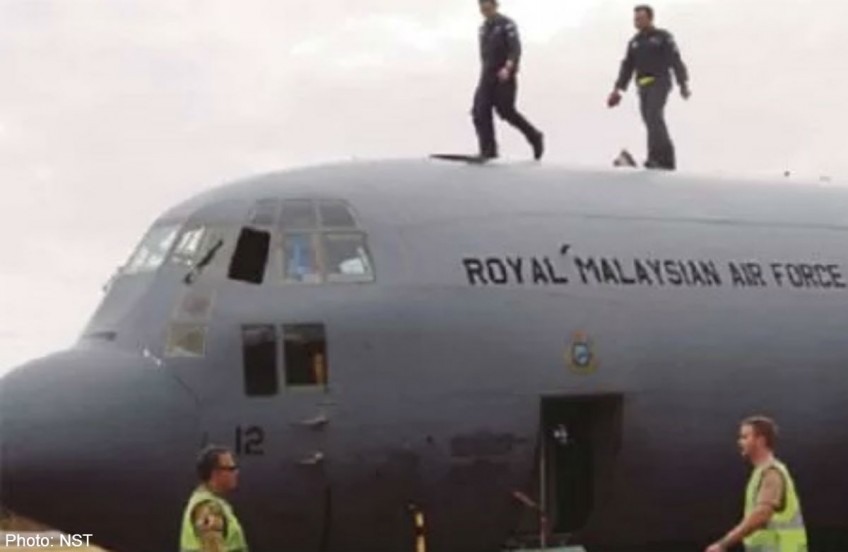MH370: Racing against time

It's a race against time as search-and-recovery crews scramble to get the Australian Defence Vessel (ADV) Ocean Shield to the search area to look for Malaysia Airlines' flight MH370's "pinger" on its flight data recorder before its battery runs out.
Once the battery is out of juice, any hope of finding the missing airliner is as good as gone.
Ocean Shield was scheduled to have been mated with the United States Navy's towed pinger locator (TPL-25) and the Bluefin-21 autonomous underwater vehicle (AUV) in here two days ago, but the ship's arrival from Sydney was delayed due to unforgiving weather conditions.
The battery on the flight data recorder normally lasts a month. However, while the pinger is certified for 30 days, it could last up to 15 days longer, say experts.
An Australian Maritime and Safety Authority (AMSA) spokesman told the New Straits Times that ADV Ocean Shield was scheduled to depart Perth yesterday and head to the search area "at flank speed", with the pinger locator and AUV on board.
The pinger locator will be towed behind the Ocean Shield and can detect the acoustic pulses from the locator beacons. The returns will be analysed and once there is evidence of a wreckage on the ocean floor, the unmanned AUV will be deployed to investigate.
Packed with cameras and video equipment, Bluefin-21 uses active sonar to locate underwater wreckage and will provide the initial confirmation of MH370's final resting place.
Yesterday, despite not having any respite from the foul weather, SAR planes continued to take off from Royal Australian Air Force (RAAF) base Pearce in their hunt for MH370.
Also taking part was a Lockheed Martin C-130H Hercules of the Royal Malaysian Air Force's No. 20 Squadron.
Initially tasked with just flying a familiarisation hop, the crew, under the leadership of detachment commander Major Jafri Mohammad Suboh, received early clearance to take part in the mission.
Only one RMAF C-130 Hercules was sortied out yesterday, under the command of Major Mohd Anuar Ahmad. The aircraft launched at 11am to join the nine other airplanes from six other countries tasked with finding the Boeing 777-200ER.
The other RMAF Hercules was placed on routine stand down.
Today, the two aircraft are scheduled to conduct missions. One aircraft is scheduled to depart at 9am, and the other 30 minutes later.
AMSA yesterday tweeted: Weather forecast to be worse today with light showers and low clouds, though search operations are expected to continue.
Yesterday's search was concentrated around a search box about 1,850km west of Perth. It continues to focus on an area about 319,000 sq km -- about the size of Norway -- based on a more refined analysis by international air crash investigators.
In all, nine planes were involved in yesterday's search. They included three RAAF P-3 Orions, a Japanese P-3 Orion, a Chinese People's Liberation Army Air Force Ilyushin Il-76, a Republic of Korea P-3 Orion, a USN P-8 Poseidon, one RMAF Hercules and one civilian jet acting as a communications relay.
The first aircraft, the Il-76, departed for the search area at 9am.
HMAS Success, the Chinese Maritime Safety Administration ship Haixun 0, China Rescue and Salvage Bureau ship Nan Hai Jiu, and the Chinese Navy vessel Jinggang Shan arrived in the search area on Saturday. A further six ships arrived in the area yesterday.
All ships in the search area are tasked to locate and identify the objects sighted by aircraft over the past three days.
"Until items are picked up by a ship and assessed by expert investigators, no conclusions as to their origin can be made," said New Zealand's Air Vice-Marshal Kevin Short.
As the hunt resumed, Australia said its former military chief, Angus Houston, would head a new unit to help in the search, which involves the militaries of seven nations -- Australia, Malaysia, China, New Zealand, Japan, South Korea and the United States.
However, aviation expert David Learmount, who was quoted on Australia's 60 Minutes yesterday, was blunt in his assessment.
"I don't think we'll ever see either the black boxes or anything else. We will only recover what floats."